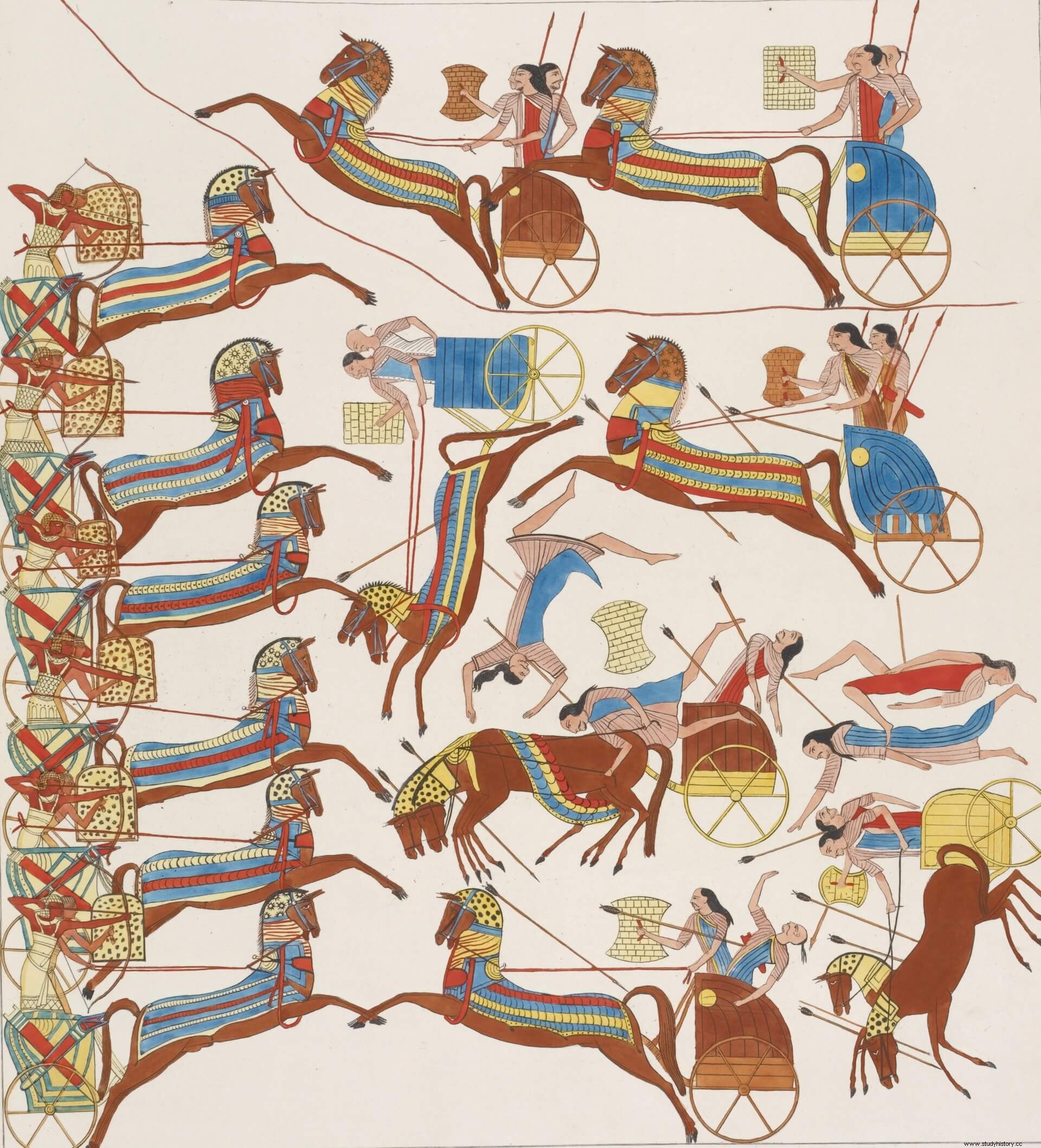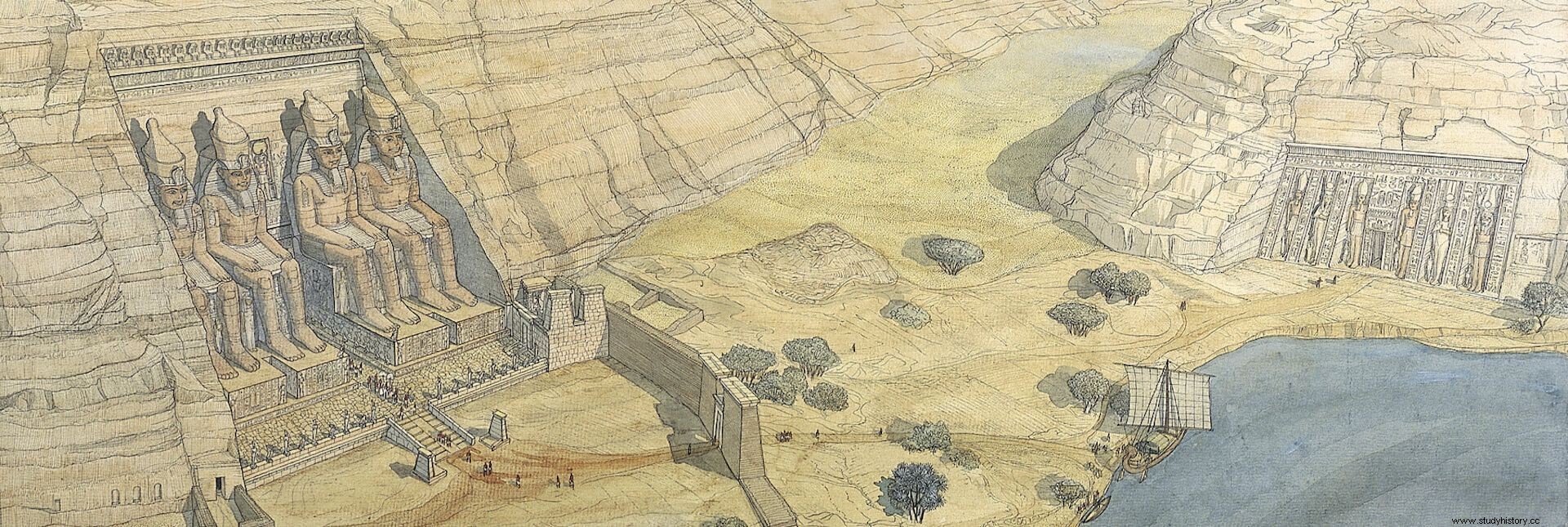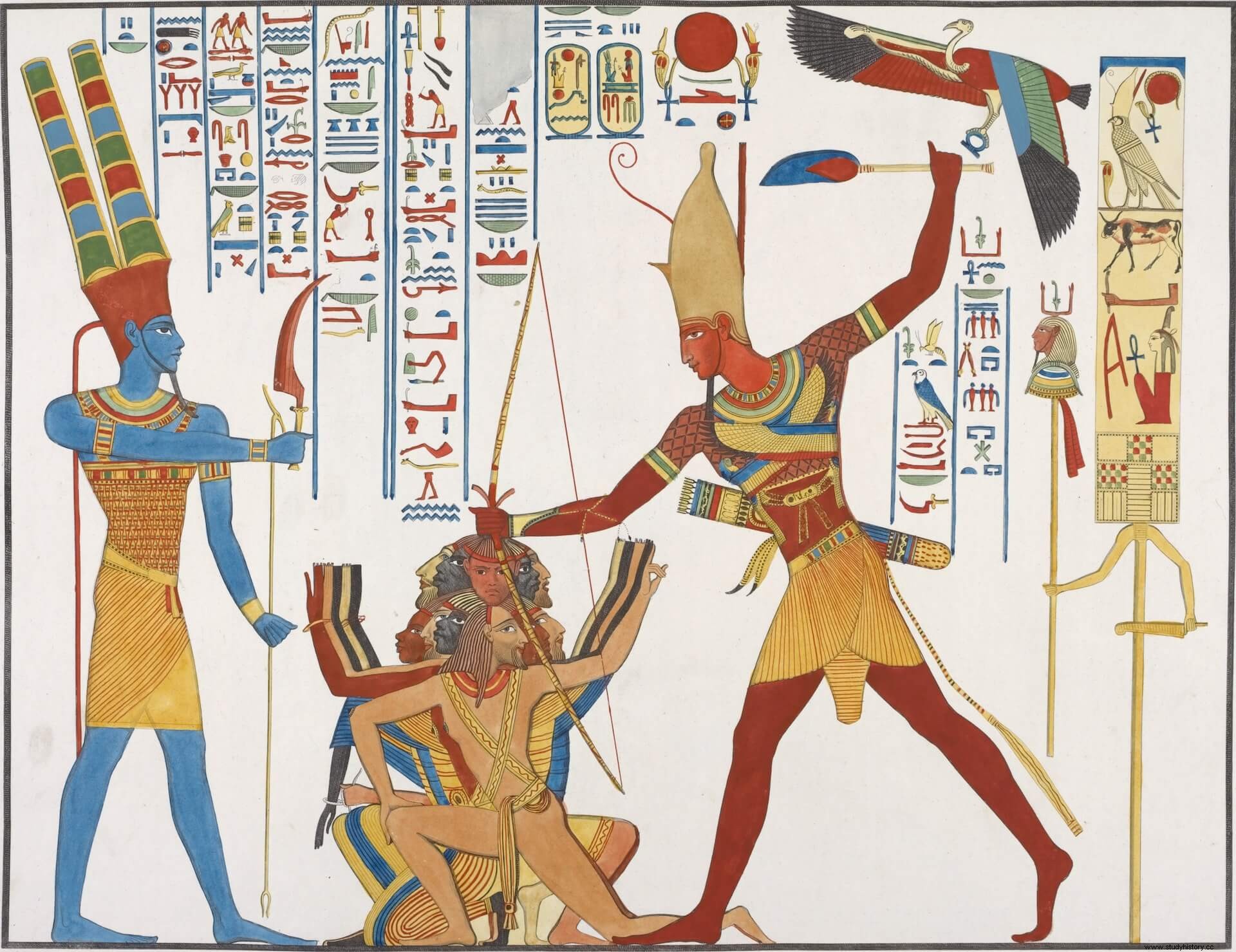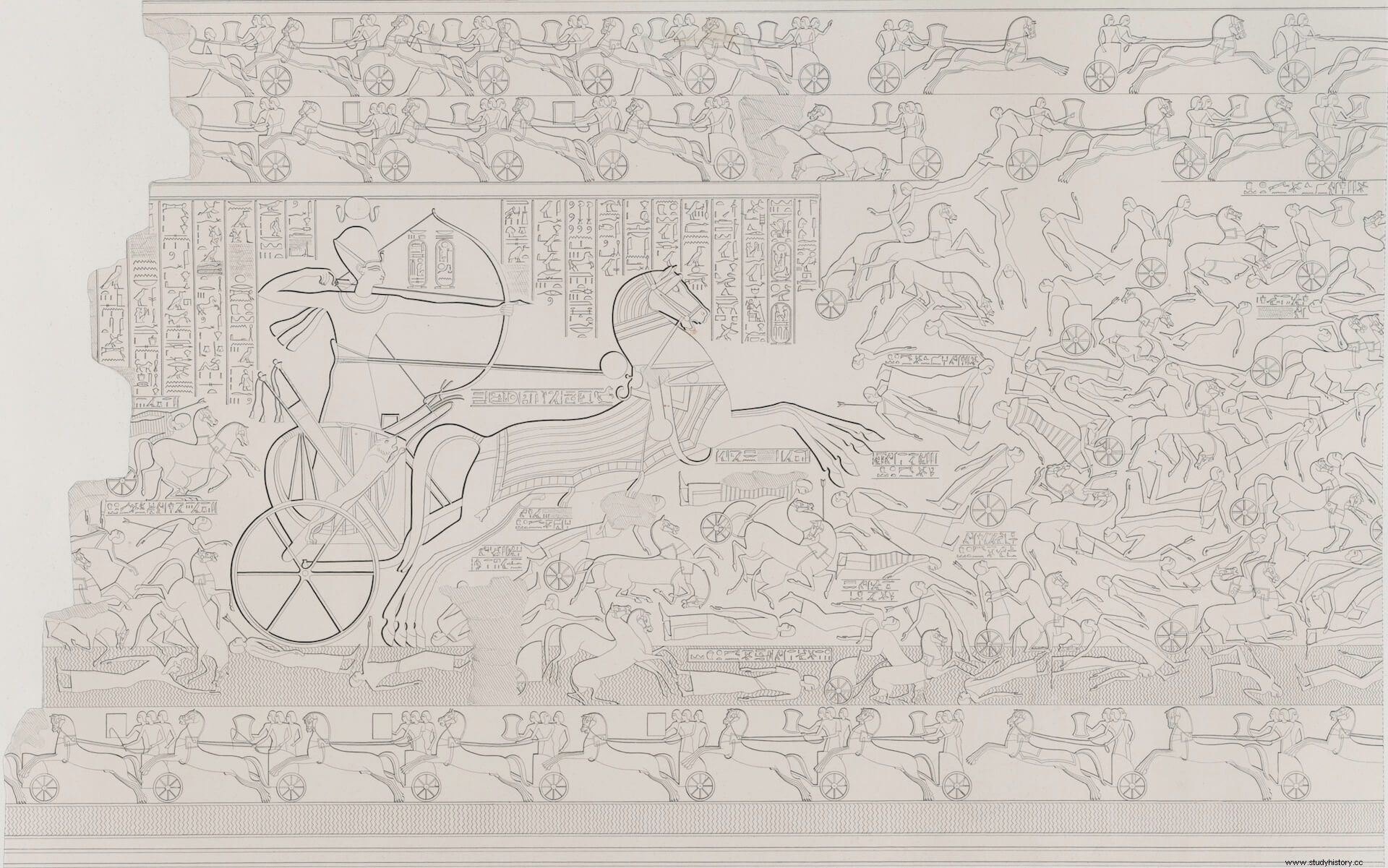
In it the Hittite and Egyptian armies clashed and , although the result of the battle was uncertain (none managed to impose forcefully on his opponent), its results were not so:the pharaoh had to abandon all pretense over the Syrian territory -which his predecessors in office had indeed dominated- retreat and grudgingly acknowledge Hittite supremacy over much of the eastern Mediterranean, a theater for which Egypt had long competed with other powers. The humiliation was doubly surprising because it coincides with one of the most brilliant stages in the long historical development of Pharaonic Egypt, the so-called New Kingdom –or Empire–, which took place between 1539 and 1077 BC. C.
However, in official Egyptian documents the battle of Qadesh is presented as a resounding victory, to the point that historiography believed for a long time that it had been. Thus, in the funerary temple of Ramses II in Thebes, known as Ramesseum by modern historiography (see Golvin, J.-C., Journey through Ancient Egypt , p. 56-59 and “A home for the dead” in Archeology and History #4:The Book of the Dead ) as well as the temple erected by this same pharaoh in Abu Simbel (see Golvin, pp. 16-17) the wall reliefs, initially polychrome, narrate a distorted version of the events, an alleged overwhelming victory of the pharaoh over his enemies and, by extension, of order against chaos.

And it is that, according to the worldview of this people, the monarch acquired the role of guarantor of order and harmony in the universe, a concept that they called maat . A defeat of the pharaoh would be equivalent to a failure of the Egyptian religious system as a whole, something completely unacceptable. The supreme divinity of the Egyptian pantheon, Amun-Ra he was understood as the carnal father of the reigning pharaoh (see “Religion and the funerary world in the New Kingdom” in Archeology and History #4), and the pharaoh himself will be Horus , who in turn, once dead and buried with full honors and according to the complex liturgy and relevant rituals (see “Departing towards the horizon” in Archeology and History #4) will be identified with the god Osiris.

It is true that the narrative is not entirely fanciful, some Some of the aforementioned reliefs from Abu Simbel and the Ramesseum show combat scenes that were probably historical, true, such as the siege of some towns by the Egyptian troops, or the assault of the Hittite troops inside the Egyptian camp. However, the final conclusion of the stone story is triumphant:the enemies are killed by the thousands and the pharaoh prevails over the rest, which contradicts reality as we have just seen. It seems evident that Ramses, wounded in his pride, was forced to redouble efforts in the representation and distortion of these facts, for propaganda purposes . We do not know to what extent he was able to deceive his subjects, but we do know that, engraved in stone for posterity, the false Egyptian story lasted more than three thousand years, until –almost– our days.

Despite this, these documents are from a Invaluable, since they inform us about a multitude of details that, otherwise, would have gone unnoticed by historians and would have been lost or less well known in our days. Thus, for example, we see in the reliefs the representation of foreign troops at the service of the pharaoh, case of one of the parietal engravings of the temple of Abu Simbel in which sherden or shardana warriors appear (see "at the service of the pharaoh" in Wake up Ferro Ancient and Medieval #15:Egypt, the New Kingdom and “Soldiers of the Pharaoh” in Desperta Ferro Antigua y Medieval #48:Qadesh. Egypt against the Hittites ), an ethnic group exogenous to Egypt that participated in the set of populations that historians call "peoples of the sea" , from different origins. A little later, these same peoples of the sea gained great prominence by participating in a series of campaigns of devastation along the coasts of the eastern Mediterranean, in what historiography has been calling the Crisis of the year 1200 BC. C. As a consequence of these raids, some of the most powerful empires and states in the region disappeared from history, including the Hittite kingdom and the Mycenaean states; Egypt miraculously survived after repelling several incursions by these invading peoples (see "The battle of the Delta. Egypt against the peoples of the sea" in Desperta Ferro Antigua y medieval #6: Thalassocracies ). It is a historical milestone of such an entity that it serves today to compartmentalize historical periods and separate the Bronze Age from the Iron Age.
